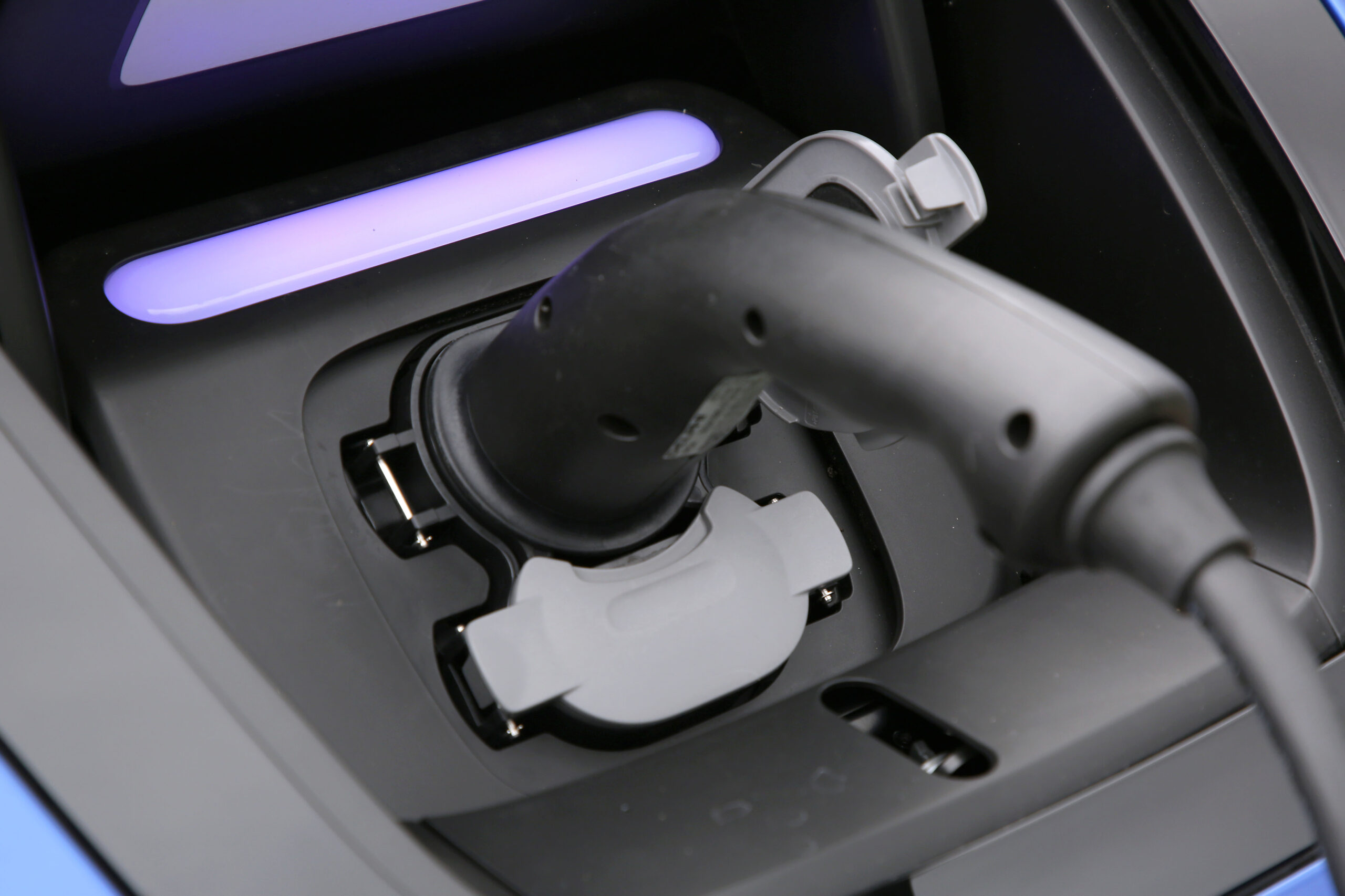
From the construction site to last-mile delivery, the van has long been the workhorse of the UK economy. But what that van looks like, how it performs, and even who drives it is set to change dramatically over the next ten years.
Electrification, digital intelligence, and a new era of operational efficiency are all reshaping the humble light commercial vehicle (LCV) into a tech-rich tool for modern business.
Of course, electric vans are no longer ‘niche’ products. Demand for battery electric vans in the UK was up 52.8% in the first half of the year, with 13,512 units registered, helped by a 97% jump in deliveries in June. However, in the year to date, new electric van registrations remain at just 8.6% of the overall market, little more than half the 16% share mandated by the Government for 2025.
So, what will define the van of the 2030s? From platforms and powertrains to pricing and predictive technology, here’s what the next decade could have in store.
The next wave of electric vans will look quite different from today’s converted diesel platforms. These new platforms will be engineered from scratch for electric propulsion, rather than retrofitting existing ICE (internal combustion engine) designs.
The result? Longer ranges, faster charging, higher payloads, and smarter integration of auxiliary features. Expect vans that can not only deliver parcels but also power tools on-site, run equipment, or serve as mobile powerbanks – all using energy from their onboard batteries.
Paul Kirby, LCV expert and former Head of Commercial Vehicles (UK) at LeasePlan, says the pace of transformation is faster than many in the industry are prepared for.
“I think in the coming years we will see more ‘ground up’ electric vans coming to market from the mainstream OEMs,” said Kirby. “These dedicated EV platforms will answer more of the challenges around the higher end of range and improve charging speeds to tackle operational downtime whilst giving even greater payloads and useability from being able to deliver power to operate tools etc, from the power in the van.”
One of the biggest pain points for electric van operators today is charging downtime. Fleets operating on tight delivery schedules or time-sensitive site visits can’t afford to sit still for hours.
The arrival of 800V electrical architectures, more powerful DC rapid charging, and advances in battery density are expected to bring charging times down significantly, potentially as low as 15-30 minutes for a usable top-up.
Combine this with smart routing software and better infrastructure planning, and the logistics of charging will start to integrate more seamlessly into daily operations.
While the technology has made great strides, pricing remains a critical hurdle. Many operators still view electric vans as expensive, complex, and financially risky, particularly in the SME sector.
“What is clear is that the RRP of many of these vehicles is wholly unrealistic,” Kirby says. “The price issue is now being addressed in some quarters with brands like Renault and Kia coming with pricing that competes head-to-head with diesel. I do think all manufacturers need more realism on this.
“My expectation is that this will drive the market to realign pricing to meet the requirements of the transition. Not forgetting that economics of selling less diesel and more electric will bring pricing changes on its own. The bigger challenge is that of residual values and the education and support needed to give confidence to second-hand buyers.”

Fleets still worry about the long-term worth of electric vans, and second-hand buyers remain cautious. Education, warranty support, and robust second-life markets will all be critical to improving confidence in used electric LCVs.
Jamie Fretwell, PR and Communications Manager, Jameel Motors Farizon Auto, however, believes the direction for the van sector is clear: it’s all about going electric and the purchase price may not ultimately be a barrier for those looking to make the transition.
“For vans, the outright purchase is only one part of the story and actually upfront price parity is not as relevant as total cost of ownership (TCO): for the majority of use cases EVs are already ahead of petrol or diesel vans for TCO,” he explained. “So, while cost is a big issue, of course, the sticker price isn’t an important factor. Few fleets or SMEs purchase their vans outright, and leasing costs are far more relevant in combination with running costs.”
Beyond batteries and price tags, the next decade will also see artificial intelligence (AI) embedded into fleet operations – not just as a gimmick, but as a genuine productivity tool.
Fleet managers are already grappling with vast amounts of data: vehicle diagnostics, driver behaviour, energy consumption, charging cycles, and more. AI can analyse this in seconds and deliver actionable insights, such as:
- How to coach drivers to use regen braking more effectively
- Where to deploy new charging infrastructure based on usage patterns
- Which vehicles are at risk of mechanical failure before it happens
Paul Kirby commented: “AI is rising to the fore in being able to tackle the ‘big data’ being associated with telematics regarding driver safety and also the transition to EV.
“It is impossible for us to be able to digest the data and get to the insights hidden within. AI does in seconds what would take us hours and, with some careful sense checks along the way, delivers us critical insights to be able to help drivers improve, get the best from their electric vans and decide where electric infrastructure can be best deployed and is needed most. It is also now being used to identify issues on vehicles before they happen. Again. It’s doing the crunching so that humans at companies like The AA can make informed interventions and prevent dangerous breakdowns.”
So what else can we expect? Perhaps a move towards a society where ‘robots’ are doing the driving work. Sounds far-fetched but trials suggest that fully autonomous vans are no longer science fiction and will be with us in a matter of years, not decades. Development is already underway, and the case for broader adoption – particularly for last-mile logistics and depot-to-depot shuttling – are becoming clearer.
While full self-driving across all environments may take longer, level 4 autonomy – where vans can operate without a driver in controlled environments – could become common within 3 to 5 years, depending on regulatory approval and infrastructure.
The Ford E-Transit autonomous van is now driving on UK roads using Oxa driver software and it marks a significant leap forward in the commercialisation of self-driving technology. It is equipped with standard automotive-grade sensors, including cameras, lidar and radar. Full 360-degree perception and long-range detection enable autonomous operation up to 35mph in mixed traffic. Manual controls are preserved, enabling the vehicle to be used flexibly in a non-autonomous mode. Both Ford E-Transit vans and minibuses, driven by Oxa, are available now for integration into commercial fleets.
Gavin Jackson, CEO of Oxa, believes the future is in autonomous vehicles, and the E-Transit is proof that self-driving vans are on our doorstep.
“Making the Ford E-Transit available for autonomous operations is the next step on our journey to deliver safe, scalable, and sustainable autonomous solutions,” he said. “This vehicle represents an important milestone in our mission to reshape the future of passenger transportation and logistics.”
And the business case is strong. Autonomous vans promise to reduce driver costs, increase reliability, and extend operating hours.

Another trend to watch is the rise of the software-defined vehicle (SDV). Much like smartphones, future vans will be defined less by hardware and more by the software that runs on them.
Over-the-air updates, app-based diagnostics, digital keys, and on-demand feature activation are all set to become standard. Fleets may soon be able to subscribe to features like real-time traffic rerouting, advanced camera vision systems, or energy optimisation tools, based on operational needs.
This digital layer will not only make vans more adaptable – it also opens the door to greater integration with fleet management platforms, delivery software, and telematics ecosystems, bringing everything under one unified operating system.
Renault Group has been developing SDVs and, in particular, the Trafic model with its specialist division, Ampere. A specialist in intelligent electric vehicles, Ampere designs, develops, manufactures and markets electric vehicles incorporating a process that takes account of environmental and social impact as well as the customer experience.
The Trafic is among a new range of Renault vehicles to gain central, scalable and flexible SDV architecture. It will receive automatic updates through Renault to ensure a long service life without obsolescence issues.
Antoine Vuillaume, SDV Programme Director, Ampere, said: “Developing software is no longer peripheral and limited to certain functions, as in previous architectures, but central to the entire vehicle (the Trafic).
“This centralised software architecture can be updated throughout the life of the vehicle, in the same way as a phone or a laptop. It is equipped with supercomputers, operating in the same way as a brain with two hemispheres. The right hemisphere manages the interfaces with the driver – infotainment, apps, voice control, 3D browsing and sign recognition. The left hemisphere is the vehicle’s nervous system, controlling all the actuators for the various functions from braking to locking, as well as storing the data supplied by the sensors.”
In line with its sustainability objectives, Renault has also increased the percentage of recycled materials used for the exterior and interior the vehicle to 22.5%, while 80% of these materials can be recycled at the end of their life (these figures exclude the battery).
So, it is clear then that software architecture will be much more ‘intelligent’ and vans will be much more usable. The van of the 2030s promises to be cleaner, smarter, more efficient and more connected. But the transition won’t be without bumps in the road. Challenges around infrastructure, cost parity, supply chain resilience and user confidence will continue. But as Paul Kirby says, “the pace of change is quicker than we expect”.


